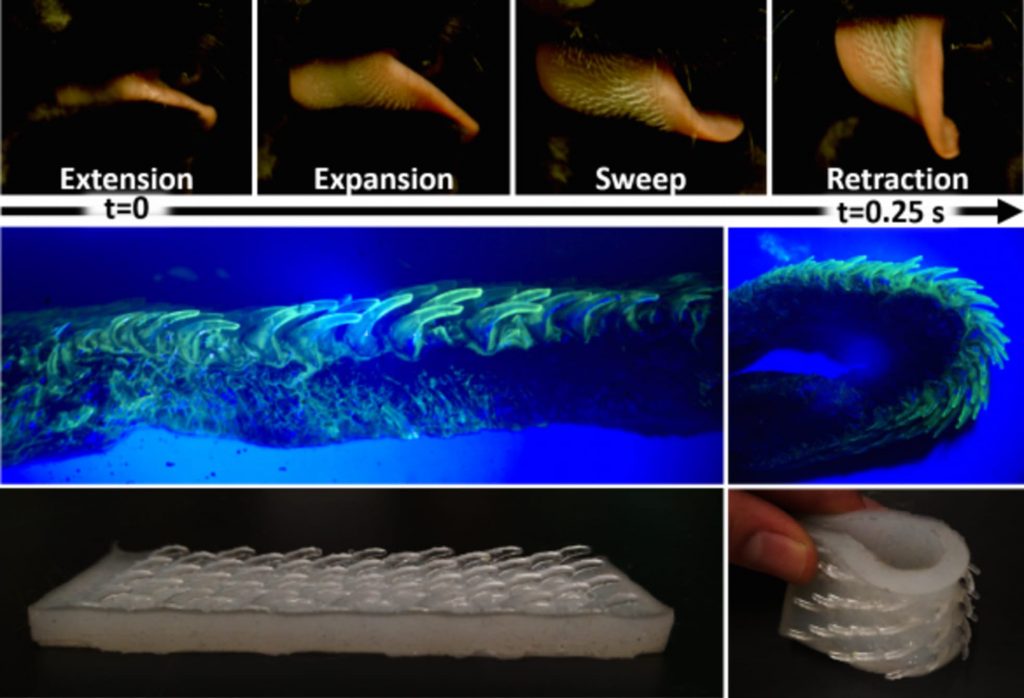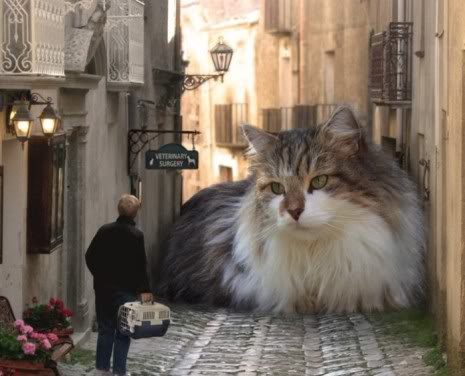GeorgiaTECH PhD student Alexis Noel has been studying the adhesive properties of animal tongues for over two years. Originally her research focused on the sticky catapult of frog tongues, but recently it has turned to the sandpaper-like tongues of cats, using 3D printing.
Noel’s Cat tongue Velcro proposal is being put to the Annual Meeting of the APS (Physics) Division of Fluid Dynamics this week in Portland, Oregon. The research details how her team has managed to 3D print replica papillae spines of a cat tongue, and used it to show how the material can be used to attract and ‘clean-up’ particles.

The 3D printed replica is 400 times bigger than a typical cat tongue, but it exhibits the same elastic qualities. Noel comments:
Both the cat tongue and mimic are very good at cleaning and removing tangles in fur sample. We also discovered that the cat tongue is self-cleaning – it’s easy to remove hair beneath the spines by simply brushing the tongue from tip to end.

Noel and her team hope to continue their research by examining the tongues of bigger cats, and explain that the findings could be useful for medical cleaning or in soft robotics. It’s easy to see how pneumatic action could be added to the tongues to create a fully-functional imitation cat tongue, and perhaps help to create soft-robots capable of climbing fibers. Harvard Univeristy and the Wyss Institute have been particularly instrumental in soft robotics research.
Soft robotics designed to emulate the tensing of a hand, from Harvard Biodesign Lab on Youtube.
Earlier this year, the first fully autonomous Octobot was created by a team at Harvard university under the direction of core faculty members Jennifer Lewis and Robert Wood. Wood comments how the simplicity of the Octobot is just the start;
One long-standing vision for the field of soft robotics has been to create robots that are entirely soft, but the struggle has always been in replacing rigid components like batteries and electronic controls with analogous soft systems and then putting it all together. This research demonstrates that we can easily manufacture the key components of a simple, entirely soft robot, which lays the foundation for more complex designs.
GeorgiaTECH, home to Noel’s cat tongue research, has also recently been in the news for opening a new MakerSpace at its school of Materials Science and Engineering – which is the 3rd of its kind at the university. With such developments in conjunction with doctorate research it seems that GeorgiaTECH is on track to become an authority on the subject of 3D printing.
Featured image shows a cat grooming. Via: Manami Miyazaki on flickr



